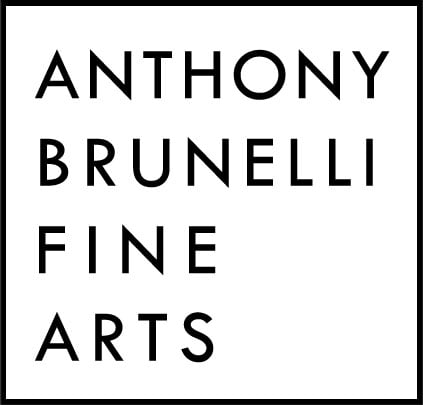By Michael Abatemarco
Joel Hobbie, Superposition AB (2019), mixed media
It’s a long-held trope that the natural and artificial — or the organic and inorganic — are diametrically opposed. But local new media artist Joel Hobbie’s seven sculptures on view in the exhibit Interstitial can serve to remind us that the separation is a superficial one, and maybe even arbitrary. Everything, after all, from the roots and limbs of the nearest tree to the most advanced computer processor, comes from the stars.
Interstitial is an interactive exhibit. Parts of each of the seven kinetic sculptures move in reaction to the presence of the viewer. But it isn’t motion sensors that cause the reactions. It’s iris scans and facial recognition technology. In essence, these sculptures are seeing you.
In appearance, each one looks like a hybrid of the spindly branches of treelike forms, robotic elements, lenses, and other devices — as though they were the product of some mad experiment in merging organic life forms and synthetics. In a way, that’s what they are — except that the scientific mind behind these anomalies is Hobbie.
The sculptures range in size from around two feet in height or width to the largest being about three feet wide to eight feet long. But in all of them, their greatest mass is at the center. That’s where their mechanical brains reside, in a jumble of LED lights, sensors, electrical components, and tangled roots.
Most of the sculptures occupy the first gallery off the gallery’s main lobby. It’s a brightly lit space, which is to its detriment. An adjoining chamber set with low light levels houses the remaining three works, and while these smaller-scale sculptures invite a more intimate, close-up interaction, the darkened chamber also highlights their light components, adding a more enigmatic quality to the overall experience. The larger room could have more impact if it, too, had it been lit this way.
Regardless of how alien they may seem — and these sculptures do resemble something you might imagine encountering in some extraterrestrial landscape — the long branching tendrils and clustered centers resemble the synapses in the human brain. Allusions to biology aren’t lost on the artist, who titled one piece Neuron 4, and another Exons, a reference to molecules of DNA or RNA that code for proteins.
It’s curious that the sculptures don’t do more. They react with limited motions. Magnapina, for instance, once it detects that you’re in its vicinity, retracts several of its branches, which curl inward like the legs of a dying spider. It seems to shyly recoil from human presence. Perhaps being programmed to do much more than that would make it too much of a novelty or curiosity. Each sculpture, whether wall-mounted or resting on a pillar, is still, in large measure, stationary, as we would expect of a work of art.
So what is Hobbie’s objective? There is plenty of advanced technology available these days to make an immersive experience much more dynamic. Hobbie seems to want the visitor to be the curiosity here, less the interactor than the interactee.
Thus, Interstitial inverts the relationship of object and observer. Hobbie doesn’t need to go overboard to make that point. Just try to make it through the exhibit without the growing feeling that you’re being watched. Kudos to the artist for never making that feeling seem threatening.
There are aesthetics to consider. No two sculptures are the same, but there is a uniformity of appearance from one to the next. Also, they reward close inspection. Parts light up and reflect off mirrored surfaces. Lenses refract light into kaleidoscopic arrays of color. But these effects occur, not in the space surrounding the sculpture — the way light passes through a crystal, projecting rainbow colors on a nearby wall, say — but inside the mechanical components themselves. It’s as though you could peer into the “eyes” of each sculpture and discover a hidden universe.
There’s also something retro about them — lights and lenses in metal housings, like telescopes, enameled in turquoise, pale yellow, and bright green colors that recall a midcentury aesthetic.
The exhibition’s title, Interstitial, captures something of Hobbie’s intent in creating these composite forms. Interstices are the spaces between things, and it’s typically used in references to objects on a micro scale. But Hobbie seems inspired by the large as well as the small. Encountering these sculptures on the day that astronomers revealed the first picture ever captured of a black hole — a supermassive object of infinite density at the center of galaxy Messier 87, 55 million light-years distant — this reviewer was pleased and delighted to discover Hobbie’s statement.
“Interstitial fuses the spaces of cosmic and microscopic worlds together in an environment where the viewer becomes the catalyst in the joining of spaces together,” he writes. “The space between the event horizon and the singularity of a black hole. The space between on and off. The space between land and the deepest ocean trench.”
You leave Interstitial, however, feeling less like you’ve been in the in-between yourself so much as you’ve encountered denizens that might reside there — in a place where logic breaks down, where contradictions are the norm, and things we deem incompatible merge into one. You leave feeling as though you’ve encountered entities, not objects.
Source : https://www.santafenewmexican.com

